Stock levels at Kmart, Big W and Target are still low months after pandemic began
Supermarket shelves are full but it couldn’t be more different at discount department stores which are facing challenges to return to normal.
At a Kmart store in Sydney’s inner west a regiment of display kettles stand to attention, neatly in a line, there for you to prod and poke and maybe even pretend to pour.
But if you want to actually buy one of those kettles, there’s a problem. On the acres of shelf space below – that could hold maybe a hundred kettles – there are just three full boxes.
It’s not just appliances, across the store there are scores of empty or almost empty shelves.
Just a smattering of speakers remain; most mugs are missing in action; looking for a fruit bowl is fruitless and you’ll have to try hard to sniff out a scented candle.
RELATED: Stores that may never reopen after pandemic
RELATED: Photo proves 'sad' reality of closing Target store
Kmart is bereft of bikes; useless for utensils; the pillows have been plundered.
It looks like a closing down sale – or at the very least reminiscent of the supermarkets in late March when panic buying was at its highest.
But months later, discount department stores are still looking bare even as the big grocers have got on top of their stock woes.
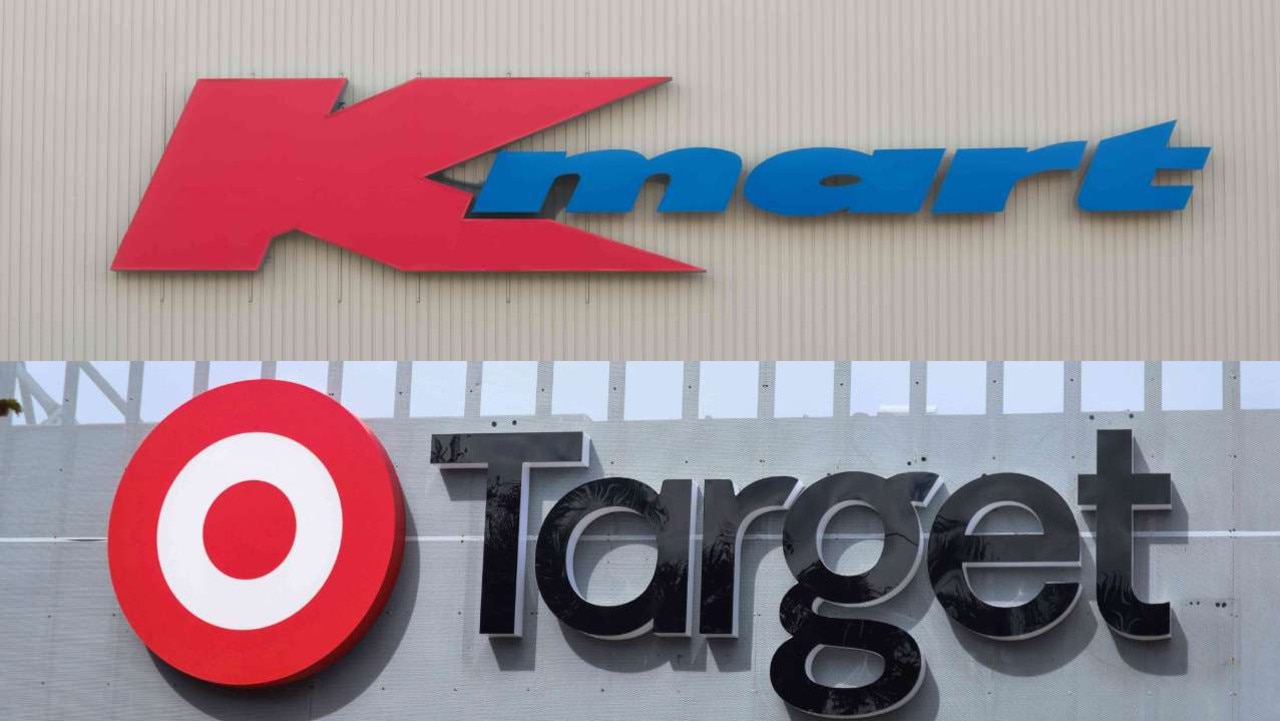
MULTIPLE CHALLENGES
A supply chain expert has told news.com.au that supermarkets only had a single issue to deal with – a huge increase in demand. However, discounters have multiple stocking issues to overcome which could mean it will take far longer for them to snap back from the severe shortages.
In a recent email to customers, Kmart admitted there were “some stock availability impacts” in categories including home office, fitness, cookware and games.
“We’re expecting stock availability to improve through May and June; and to normalise by July,” the email said.
There’s clearly a long way to go and it’s not just Kmart – Target and Big W have also had issues while Officeworks has been cleared of printers, keyboards and office chairs as people settled into working from home


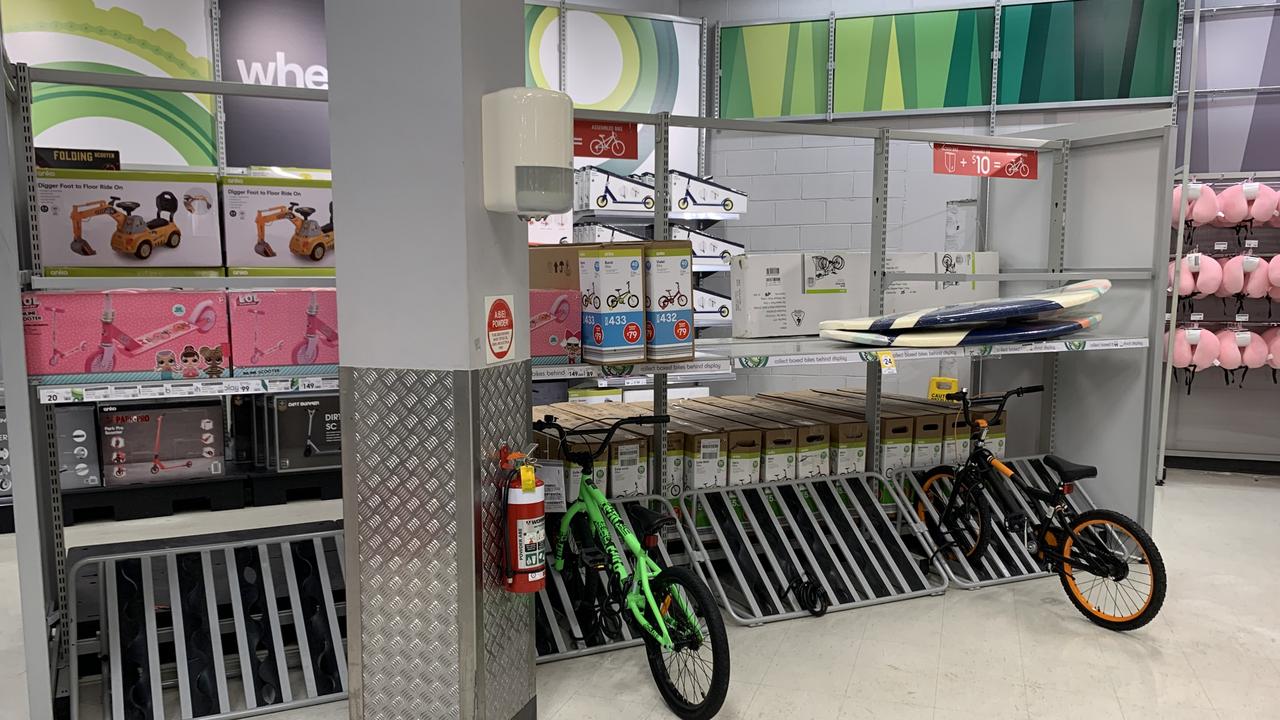
STRAINED SUPPLY CHAIN FROM OVERSEAS
In an investor update in late April, Wesfarmers said its Officeworks unit had seen a “significant growth” in sales but Kmart and Target had been relatively flat and even seen a drop off in revenue as people hunkered down at home. Apparel has been particularly hard to shift which is why stores are still awash with clothes.
But even a small uptick in demand could be enough to leave companies that rely on a continuous stream of deliveries to be left flat footed, said Monash Business School’s Dayna Simpson.
“With supermarkets everyone rushed into buy and there wasn’t a lot of stock behind the scenes so it took time for products to catch up to that demand,” Prof Simpson, an associate professor of supply chain management, said.
“Kmart has the same problem. I went into a Kmart to buy some kids toys and clothing and there wasn’t that much.”
Supermarkets also had an advantage in that most products were sourced in Australia. Prof Simpson noted that even when we were all fretting about loo roll, the mostly Australian-sourced fresh food was in abundance.
But in department stores very little of what’s on the shelves is domestically produced. The same supply chain that enables huge amounts of choice at a cheap price is also far more complex and prone to shocks that are out of retailers’ control.
For months, China was in lockdown with people unable go to work in the kettle, bike or scented candle factory. Even though manufacturing is ramping back up across Asia, where many plants are located, hurdles remain.
“Any production that needs lots of human labour is an issue right now,” said Prof Simpson.
“Some of these facilities have relied heavily on migrant labour and many of those people haven’t been able to cross borders to get back to work.”
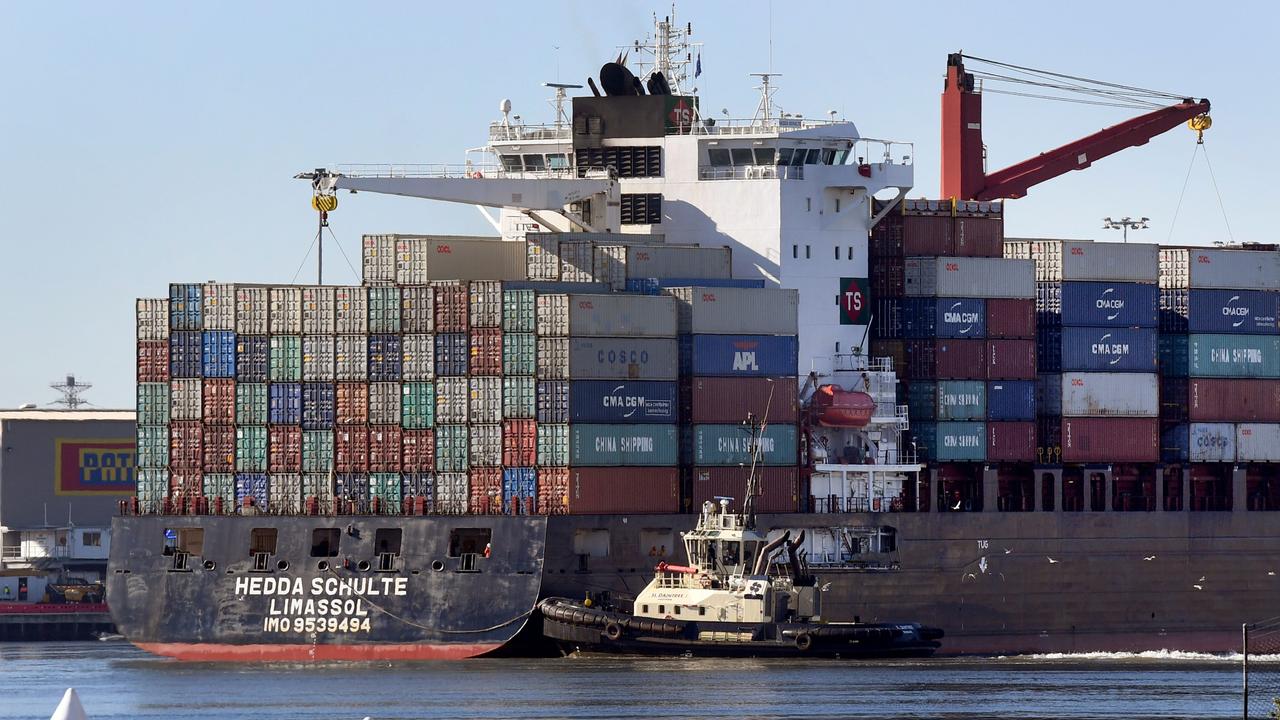
Even if you can pump out more products, there might be enough ships to put them on.
Shipping lanes have remained open but the global shutdowns have slashed consumer demand which led to a 13 per cent drop in container ship capacity, reported the Wall Street Journal.
As many as three million fewer containers were available during April and it will take time to get back to full capacity.
Fewer passenger planes mean less capacity for airfreight, so some of that cargo might be diverted to ships filling them further.
Not that discount department stores were likely to use planes to fill the empty shelves, said Prof Simpson.
“They’re not about to put a bunch of bikes on a plane; that’s expensive so they’ll use the old-fashioned low-cost way on a ship which will take longer.”
A report by professional services firm PwC found the constrained supply of Chinese manufactured goods could lead to overall revenue losses of 10 per cent for Australian retailers this year.
“COVID-19 has further exposed the inherent vulnerabilities arising from just-in-time delivery, low supplier diversity and low input country of origin visibility.”
Some manufacturers of cheap and cheerful household staples might even be swerving to more in demand items. Why make more Manchester right if churning out face masks is where the big money is?
Another factor was that consumers may have made a beeline for discount department stores precisely because they know their cheap. If you’re worried about your job you may opt for cheaper products over more expensive alternatives elsewhere.
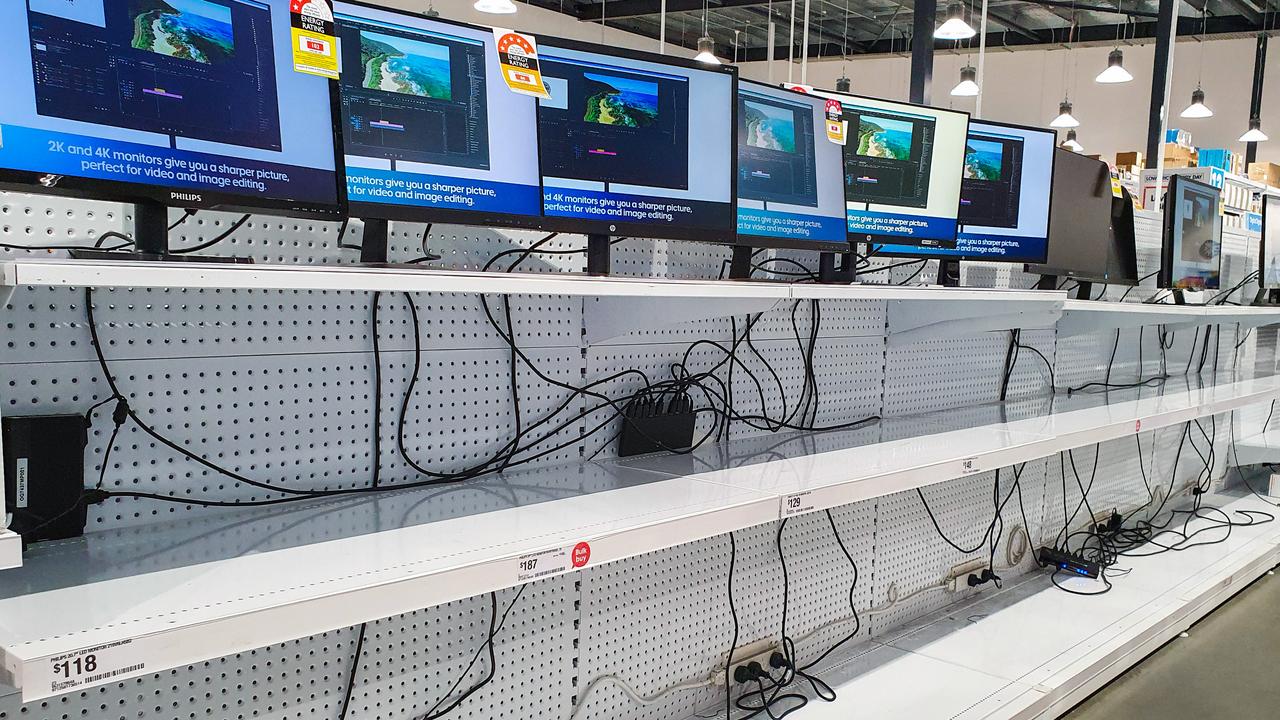
So back to the bikes, or the lack of them. An initial surge in demand cleared them out; then there wasn’t enough out the back or in the warehouse to replace them.
Even if they can get the labour to make enough extra bikes – and that’s still an if – there might not as much space on the ships to get them back to Australia any time soon.
A Big W spokeswoman said the Woolworths-owned store was facing similar issues and had seen shortages of audio visual and computer accessories, gym and fitness equipment, craft and kitchenware as families cooked at home.
“Our team is replenishing stock daily for both in-store and online customers and we are pulling orders forward and moving products quicker than ever through our network around Australia.
“We continue to work closely with our suppliers to satisfy customer demand now and as we move into winter.”
Officeworks told news.com.au printers, monitors, cables, desks and chairs, laptops, tablets, digital storage and ink cartridges had all proved popular.
“While there have been some stock shortages due to increased demand, we have sourced alternatives and increase stock levels where possible,” a spokeswoman said.
Target was contacted for comment.
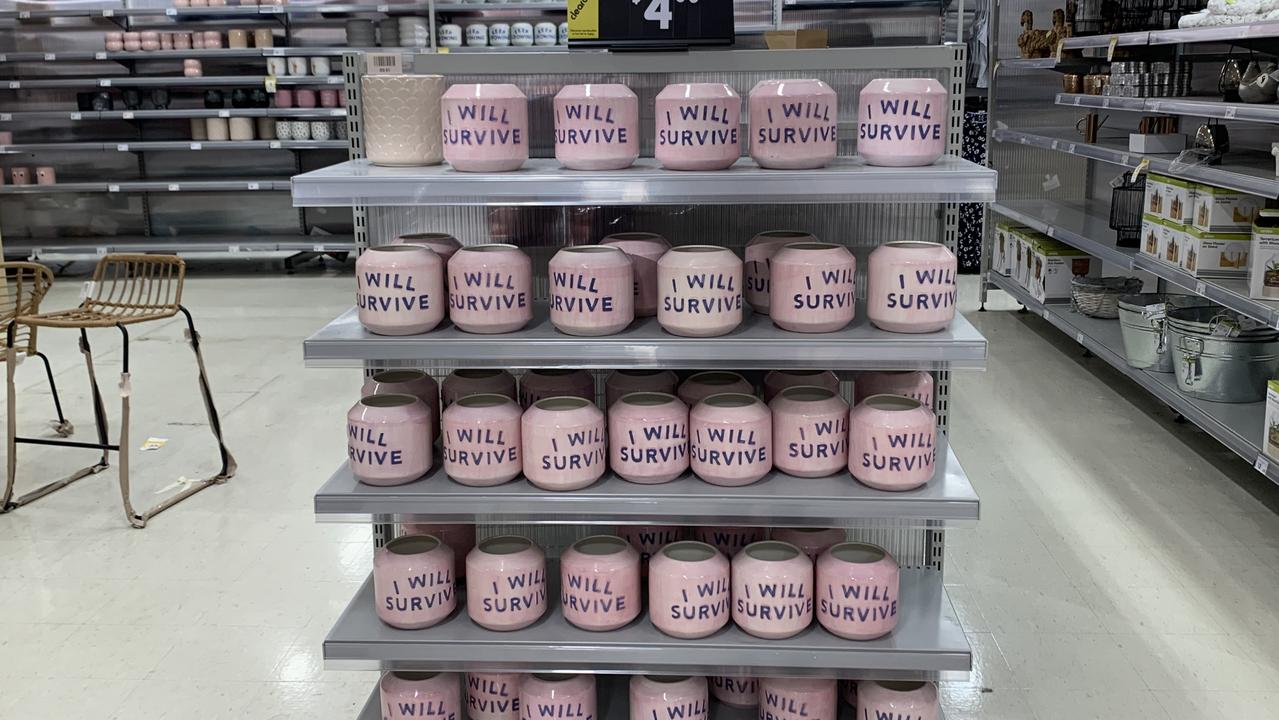
Kmart hopes that stock will “normalise” within a month or so but Prof Simpson said any prediction was hard.
“It’s not clear how long it will take, it all depends on the pandemic.”
A second wave, local outbreaks, factory closures, border restrictions – all could slow down the process of getting the shelves looking full and healthy again.
Aside from clothes, there is one shelf that is full to the brim at Kmart. It bustles with pink pots emblazoned with the words “I will survive”. It seems ironic that in a pandemic that’s the only item the store can’t shift.




